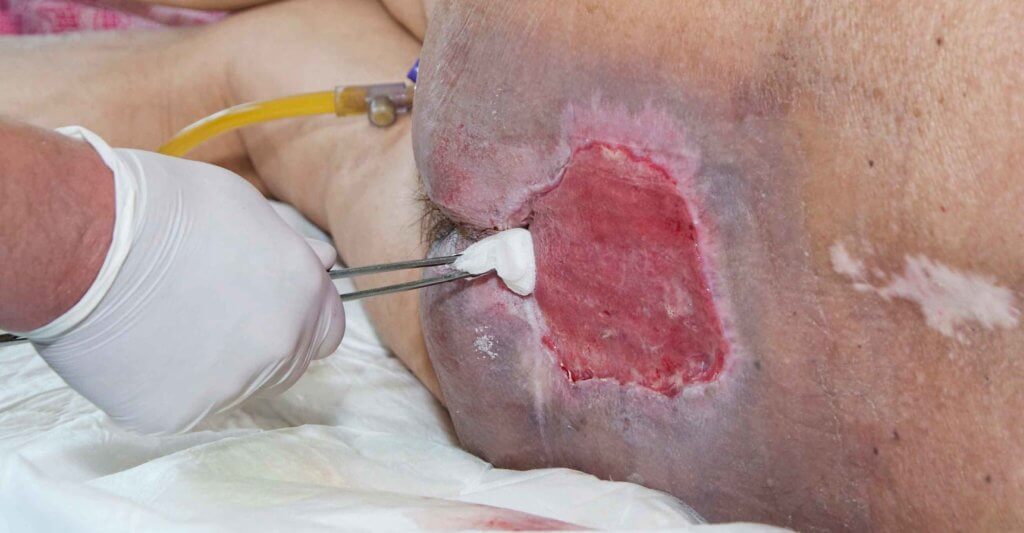Pressure injuries should be avoided at all costs.
The costs of pressure injuries are numerous, but one area of major concern is when their existence results in a lawsuit. These suits typically allege the pressure injury was the result of poor nursing and overall care of the patient and/or resulted in a patient’s death.
Jacqueline Genesio identifies several lawsuits that resulted in significant verdicts in the article “Pressure Ulcers Are Easy Pickings For Lawsuits.”
As she points out, not only can a verdict result in compensatory damages (money paid to compensate the patient for pain and suffering and lost wages, as examples), but also can include punitive damages.
In one 2015 case, Genesio reported an Arizona jury awarded $2.5 million in compensatory damages and $16.7 million in punitive damages to the estate of an 86-year-old woman.
What are punitive damages?
Punitive damages are above and beyond compensatory damages. They are meant to punish the healthcare provider(s) and the healthcare facility for willful or outrageous conduct. The courts also hope to deter them and others from engaging in similar actions that formed the basis of the lawsuit.
Not every state allows for punitive damages to be awarded against healthcare professionals, but Connecticut, Idaho, Kansas, Minnesota and Texas do allow it.
Even if a state does allow for punitive damages to be granted to an injured patient, most professional liability insurance policies exclude them from coverage.
If not clearly excluded, professional liability policies do not provide coverage for intentional acts. Since punitive damages are based on willful or intentional behavior, a purchased policy would not cover payment for that award.
As a result, punitive payments must be paid personally by the defendants against whom the verdict was entered.
How one court handled punitive damages
The June 6, 2018 case of Christensen v. Good Shepherd, Inc., illustrates how punitive damages were handled by an Iowa Court of Appeals.
The trial court granted judgment in favor of the plaintiffs (the executor of the estate of a deceased patient and others) in their case alleging nursing home negligence by Good Shepard Health Center. The court denied several of Good Shepard’s post-trial motions. The jury verdict was $150,000 in compensatory damages and $750,000 in punitive damages.
Although there were many legal issues raised by Good Shepherd in its appeal, the appellate court “upheld in all respects the district court’s order upholding the jury award in favor of the plaintiffs.” This decision included the lower court’s awarding of punitive damages.
The patient in this case was a resident of Good Shepherd, a skilled care nursing home. Before living there, the patient had a complex medical past, which included:
- History of frequent falls
- Severe osteoporosis
- Mild dementia
- Pre-existing shoulder problem limiting the use of her right arm
Upon admission, she was classified as a high fall risk resident.
Actions that lead to the lawsuit
The patient fell numerous times during her 2-½ years of residency at Good Shepard. Several fall interventions were ordered — not leaving the patient alone in her wheelchair, 15-minute checks — but were either not consistently upheld or ignored by nursing staff.
After the latest fall, the patient’s condition deteriorated. She could no longer feed or hydrate herself and could not walk on her own. She also developed numerous pressure injuries on her buttocks.

Weight loss was also a problem. Near the end of her life, she weighed 84 pounds, a loss of 40 pounds during her stay. Dietary supplements ordered were omitted 35 times in one month and a “restorative dining plan” was not immediately ordered.
Her daughters had to feed and hydrate her when they visited because there was inadequate staff to feed and provide hydration during meals.
The patient was admitted to a hospital because of hydration issues and poor nutrition. Nursing notes documented the patient was struggling with hydration and nutrition but the daughters were not informed. A new pressure injury also was present on her buttocks.
Despite the hospital’s attempt to hydrate the patient, she died. The certificate of death identified hydration as the underlying cause of death.
In upholding the judgments of the trial court concerning the punitive damage award, the appellate court noted evidence at the trial showed Good Shepherd “knowingly and continuously provided inadequate staffing, which resulted in unsafe conditions and inadequate care for residents.”
The patient’s numerous falls also were the result of inadequate staffing.
Furthermore, the court noted Good Shepherd was aware staffing levels were inadequate to meet the needs of the residents but did nothing to remedy those levels.
Therefore, as the court opined, “evidence was sufficient to support a finding of legal malice, wrongful conduct committed with a willful or reckless disregard for the rights of another.” They added that they found “the degree of reprehensibility of Good Shepard’s conduct supports the jury’s punitive damages award.”
How does this case affect you?
Expert testimony during the trial indicated that Good Shepherd failed to meet the standard of care in remedying the patient’s development of pressure injuries during her stay because of inadequate positioning by the nursing staff.
In addition, the pressure wounds she experienced were inadequately assessed and inadequately documented in the patient’s medical record. In short, the expert stated Good Shepherd did not meet the standard of care in preventing, monitoring and managing the patient’s pressure injuries.
This failure is quite telling in view of the patient’s obvious nutritional and hydration problems, which continued to deteriorate while in the home, and in her appalling weight loss.
The only conclusion that can be reached is nursing staff willfully paid no attention to the need to provide appropriate skin care to avoid and treat pressure injuries.
Adequate and complete documentation of any wound care provided, including positioning of the patient, is essential, as discussed in our blog, “The Great (Legal) Debate About Turn and Reposition Documentation.”
Awareness of punitive damages as a possible jury verdict must be kept in mind when providing wound care to your patients. Never intentionally or willfully ignore a patient’s need for positioning, the provision of appropriate wound care, or his or her voiced concerns.
If you do, it may cost you more than “simple” compensatory damages.
You can learn more about punitive damages and see if your state allows for them and whether they can be covered by an insurance policy in Wilson Elser Punitive Damages Review (2018).
Learn more in our course on Skin and Wound Management.
What do you think?

